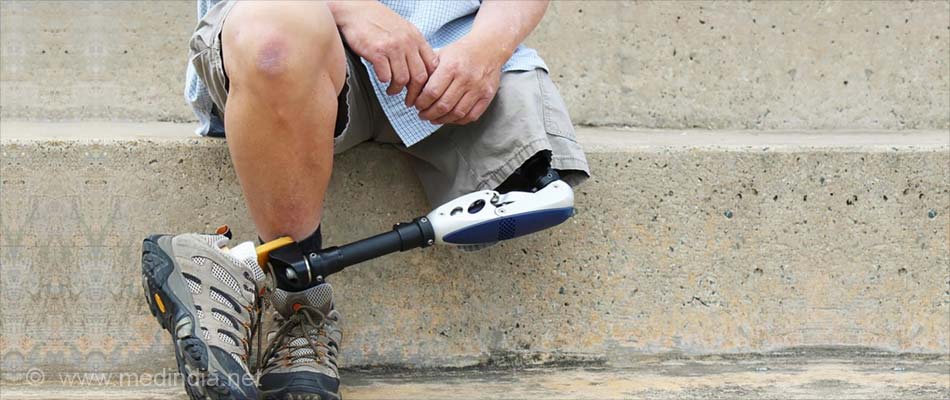About
A phantom limb is a complex phenomenon involving a sensation that an amputated or a missing limb is still attached to the body.

Approximately 60 to 80 % of individuals who have undergone amputations have reported this sensation. Phantom sensation is also observed in those who are born without limbs and in those who are paralyzed.
The phantom limb feels shorter, distorted and, is often, painful. The pain occurs intermittently, can be quite agonizing and is aggravated by stress, anxiety and by weather changes. The frequency of these painful attacks is usually ameliorated with time.
Pain is not reported by all the amputees, however, various types of phantom sensations, have been reported such as itches, twitching, tightness, burning, gesturing or even as if they are picking up something. Phantom sensations also occur when other body parts have been removed, such as breasts, tooth and eye.
Neurological Causes
Until recently, it was assumed that the irritation caused at the nerve endings, or the neuromas, of the amputated limbs was the reason behind phantom sensation.
During amputation, several nerve endings become terminated at the residual part of the limb. It was once believed that these nerve endings send the wrong signal to the brain, which is interpreted as pain. Treatment based on this assumption was never successful.
In some cases, when the pain was too severe, the surgeon would perform a second amputation to further remove the end of the amputated limb, in order to provide temporary relief to the patient. However, in many, the pain increased after the second surgery and the phantom sensation doubled.
In the late 1980s, Ronald Melzack proposed the theory of the ‘‘neuromatrix.’ According to this theory, our body’s experience is created by a large network of interconnecting neural structures. In 1991, Tim Pons and colleagues at the NIH demonstrated that sensory areas of the brain get substantially reorganized following loss of sensory inputs.
All this information caught the attention of V.S. Ramachandran, who theorized that phantom limb sensations could be the result of reorganization of the sensory areas of the brain, which receive inputs from all over the body, including the limbs. Ramachandran and colleagues proved this point through an amazing illustration - while stroking various parts of the face, the patient perceived that various parts of the missing limb was being touched. According to Ramachandran, this perception was because the brain cortex became reorganized after the amputation.
Recent Experiments
In 2009, researchers Lorimer Moseley and Peter Brugger experimented with seven arm amputees who were encouraged to use visual imagery to contort their phantom limbs into various impossible configurations. Four of the seven patients succeeded in using their phantom limbs to achieve impossible movements. The study revealed that motor commands were modified to execute these movements. These experiments have put forth the fact that the brain is aplastic entity, and that the way we perceive our body parts can be changed by changing the internal mechanisms of the brain.
In 2012, Karen Reilly and colleagues proposed that the movement of phantom limbs is "real" and that they obeyed a motor command.
Phantom Limbs Treatment
During the past two decades, doctors have attempted to treat phantom limb pain with a variety of methods including antidepressants, spinal cord stimulation, hypnosis, acupuncture and biofeedback. Unfortunately, most methods have failed to bring about any constant relief.
One method which was far more effective than the rest is the ‘mirror box’ developed by V.S Ramachandran and colleagues. They carried out an experiment on a 57-year old woman who lost a hand in an accident when she was 18 yrs old. This woman experienced phantom sensation in the amputated arm. Using a mirror box, Ramachandran super imposed the image of the normal hand onto the amputated arm for 30 minutes each day. After two weeks, the woman was able to move her phantom fingers, which she now perceived to be of normal length, and was totally relieved of pain.
Of late, graded motor imagery, which employs mirror therapy and sensory discrimination training to the affected individuals, has emerged as another promising tool for treatment. Further research is warranted to study the underlying mechanisms of the phantom disease in order to generate better treatment options for this strangely delusive but very “real” disorder.






